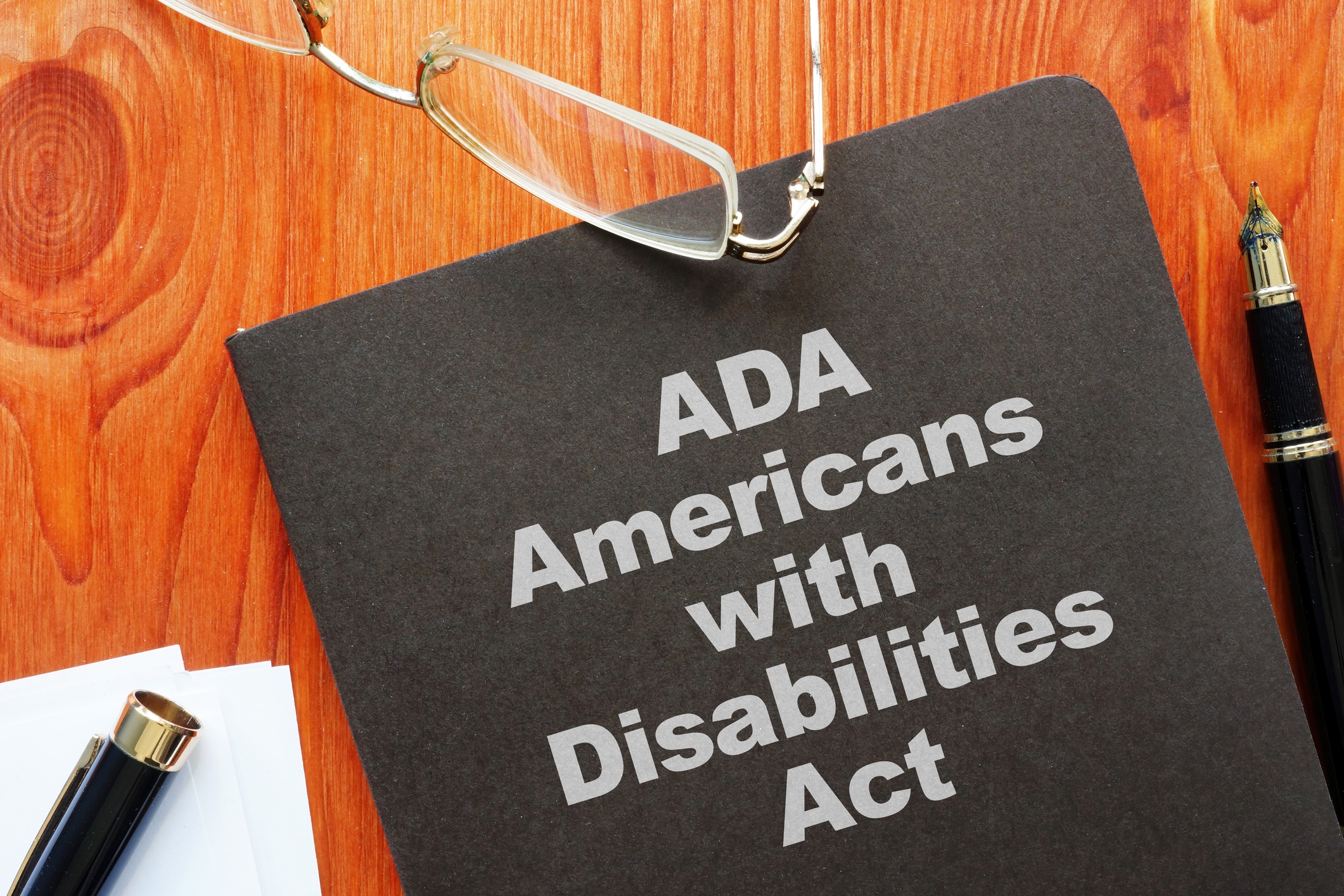How to Make Sure Your Website Is ADA Compliant

If you run a legal practice, you’ve probably considered how to make your office accessible to disabled people. But have you thought about making your website more accessible? A recent trend in lawsuits has demonstrated that people are concerned about virtual accessibility just as much as physical accessibility.

The question of accessibility isn’t just a polite consideration. Businesses are required to meet specific physical accessibility requirements or face legal repercussions in the US, and your law firm is no exception. The requirements stem from the 1991 Americans with Disabilities Act (ADA), intended to make the world friendlier to people with disabilities.
Of course, the bill was signed into law long before the internet became mainstream. As a result, it doesn’t include specific language covering digital accessibility. That doesn’t mean that it doesn’t cover websites, though. Recent cases have set precedents that show the ADA does apply to websites, and in specific ways.
If you’re concerned about your website’s accessibility, keep reading to learn what ADA compliance means online, when it’s required, the benefits of an ADA compliant law firm website, and tools for making your site more accessible.
What Does ADA Compliance Mean for Websites?
Since the ADA doesn’t cover online assets, there’s less certainty about making a website ADA-compliant. However, the Act is thorough enough to provide guidelines that can steer website accessibility concerns. A site is generally compliant if it meets the same kind of accessibility requirements as media like movies and TV.
More specifically, the current guidelines for ADA compliance online are set in the Web Content Accessibility Guidelines (WCAG) 2.0 Level AA. The WCAG has four essential criteria that a site must meet to be friendly to disabled people. The site must be:
- Perceivable: Users must be able to access information on your site in a way they can perceive regardless of their abilities.
- Operable: Users must be able to operate and navigate your website regardless of their abilities.
- Understandable: Text content needs to be readable regardless of the user’s abilities.
- Robust: The site should be compatible with a wide variety of different assistive technologies so people with different abilities can access it.
These four principles are broken down into 34 narrower requirements covering specific ways to make a site more accessible. According to the WCAG, some elements of ADA website compliance include:
- Consistent navigation options: A consistent navigation scheme helps people use screen readers to explore your site.
- Images have alt text: Alt text descriptions make images perceivable to people with visual disabilities.
- Videos have closed captioning and audio descriptions: Closed captioning makes videos perceivable to people with auditory disabilities, and audio descriptions make them perceivable to those with visual disabilities.
- Links and headers are clearly labeled: Clear labels make your navigation perceivable and operable to people using screen readers.
- Fonts and links contrast against the background: Contrast makes it easier for people to read and navigate your site.
There are many other considerations, too. By following the WCAG’s guidelines, you can provide website accessibility to as many people as possible.
Is Website ADA Compliance Compulsory?
Businesses are legally required to be physically accessible to patrons. It’s natural to wonder whether that’s the case for websites, too.
For the moment, there are no laws in the US that specifically require your website to be ADA-compliant. There is no equivalent of the Telecommunications Act or the Architectural Barriers Act that specifically explains what websites need to do to be accessible and penalties for failure. However, just because that’s the case today doesn’t mean it will always be true.
As the internet becomes increasingly crucial to society, a web accessibility law may eventually be put in place. While the exact contents of this eventual law can’t be known, making your site ADA-compliant today can help you prepare for the future and minimize the changes you’ll need to make.
A more immediate concern is the current trend of lawsuits against inaccessible websites. In the past five years, ADA lawsuits and class-action claims have been filed against major companies like Blue Apron, Amazon, and Beyonce’s Park Entertainment.
These lawsuits were based on a lack of accessibility features that made the websites difficult or impossible for visually disabled people to use. Many of these ADA cases end in significant settlements for the plaintiffs.
While an individual law firm is unlikely to warrant a class-action lawsuit, you may still be sued by an individual. There are even some attorneys that specialize in digital accessibility cases against small and mid-sized businesses. While ADA compliance isn’t compulsory, it’s an excellent idea to keep your practice protected.
Benefits of an ADA Compliant Law Firm Website
Regardless of whether ADA compliance is compulsory or just recommended, it’s an excellent idea for your website. Here’s how ADA compliance protects you, makes your site more accessible, and helps you build a wider potential audience.
Protect Against Lawsuits
The most basic benefit of an ADA-compliant site is that it protects your practice from opportunistic lawsuits. Regardless of whether your site is found to be non-compliant, a lawsuit takes time and effort. Even if you get the case dismissed, it wastes your time and may harm your reputation.
By making sure your site is ADA-compliant, you can cut off frivolous lawsuits at the pass. As these cases become more common, taking the time to make your site compliant becomes more critical.
Reach a Wider Audience
Many people online rely on accessibility options to make a site approachable. When your site is ADA-compliant, these people can navigate and understand your site. For instance, people with screen readers will be able to engage with your content, and deaf people will be able to watch your videos.
This dramatically expands your potential audience. Making your site accessible to disabled people sets you apart from your competition. In fact, if your competitors’ sites aren’t ADA-compliant, you immediately become the preferred option for these demographics because they can actually get in touch with you.
Boost Your SEO
Many of the things you can do to make your website more accessible to people will also make it more interesting to search engines, improving your SEO, so you appear higher in search results. So, for example, a straightforward navigation scheme benefits those who are differently abled, but also allows Google to understand how your site is put together. As a result, you can benefit from more traffic even outside the disabled community.
Improve User Experience
An ADA-compliant law firm website is well-organized, easy to read, and easy to find. That’s beneficial for far more than just disabled users. The accessibility options you add to your site improve the user experience for everyone.
Video transcripts let people with poor internet connections engage with your multimedia content. Similarly, closed captions allow people to watch videos in public without disturbing others. A cohesive navigation scheme helps everyone get around your site and find the information they want. When your site is accessible, it’s a better experience for all of your visitors.
Tools for ADA Website Compliance
There are a lot of elements to monitor if you want your site to be fully accessible. If you’re just starting your compliance efforts, it will help to have some tools on your side. These three programs are excellent for keeping your site compliant without the risk of missing anything.
- WAVE: The WAVE Web Accessibility Evaluation Tool is a suite of tools you can use online to check whether your site is accessible. It uses the WCAG guidelines to identify whether your site is ADA-compliant. You can use its browser extensions in Chrome and Firefox to check individual pages or try the service’s paid APIs to collect data quickly.
- AccessiBe: This platform can help you understand where your site is not yet compliant and even develop solutions to make it more accessible. It’s automated and performs regular checks on your site to ensure you remain up-to-date and compliant no matter what changes you make to your site.
- JAWS: If you want a more immediate understanding of how your site is used by disabled people, you can use the screen reader JAWS. Visit your site through this software to experience how visually-impaired users navigate your site. If you can’t accomplish a task through the screen reader, then you should update it to be accessible.
Make Your Site Accessible from the Ground Up
Accessibility is more than just a kind gesture. Every accessible website is one step closer to a genuinely equitable internet. By making your site ADA-compliant, you can help disabled people access more of the internet, improve your SEO, and make your site experience better for everyone.
If you’re looking for help making your site ADA-compliant, Martindale-Avvo can assist. Reach out today to learn how Martindale-Avvo can help you improve your site and make it more accessible going forward.









